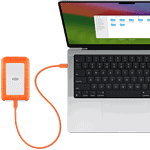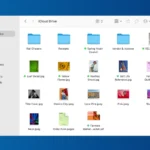Apple released macOS Ventura 13.7.8 on August 20, 2025, as a critical security update targeting a dangerous zero-day vulnerability. This update addresses CVE-2025-43300, which Apple warns has been actively exploited in targeted attacks against specific individuals.
The macOS Ventura 13.7.8 update fixes a serious security flaw where processing malicious image files could corrupt system memory. Apple describes this as an “extremely sophisticated attack” that exploits an out-of-bounds write issue. The company resolved the problem with improved bounds checking.
Mac users running Ventura should install this update immediately. Apple rolled out this emergency patch alongside similar updates for newer macOS versions. The vulnerability affects image processing across Apple’s operating systems, making prompt installation essential for security.
Overview
macOS Ventura 13.7.8 is a critical security update that Apple released on August 20, 2025, alongside updates for macOS Sequoia 15.6.1 and macOS Sonoma 14.7.8 (source: MSN). This update addresses a serious zero-day vulnerability that was actively being exploited in the wild.
Key Updates
Critical Zero-Day Security Fix (CVE-2025-43300)
The most significant aspect of macOS Ventura 13.7.8 is the fix for CVE-2025-43300, a critical zero-day vulnerability in Apple’s Image I/O framework (source: Sensors Tech Forum). This vulnerability:
- Was actively being exploited by attackers before Apple’s fix
- Affects image processing in the ImageIO framework
- Causes memory corruption when specially crafted images are processed
- Added to CISA’s Known Exploited Vulnerabilities (KEV) catalog on August 21, 2025 (source: Windows Forum)
Additional Security Fixes
Beyond the zero-day patch, this update includes other important security fixes that Apple doesn’t disclose until investigations are complete and patches are available (source: Apple Support).
Why This Update is Urgent
Active Exploitation
Unlike typical security updates that address theoretical vulnerabilities, CVE-2025-43300 was already being used by attackers in real-world scenarios before Apple released the fix (source: Sensors Tech Forum).
CISA Involvement
The Cybersecurity and Infrastructure Security Agency (CISA) added this vulnerability to their Known Exploited Vulnerabilities catalog, indicating its severity and the active threat it posed (source: Windows Forum).
Emergency Release
Apple “rushed out” this fix across multiple platforms simultaneously, demonstrating the critical nature of the vulnerability (source: MSN).
What’s NOT New
No User-Facing Features
macOS Ventura 13.7.8 doesn’t include new features or user interface changes. This is purely a security-focused update designed to patch critical vulnerabilities.
Legacy Support Continues
This update demonstrates Apple’s continued commitment to supporting macOS Ventura with security patches, even though newer versions like Sonoma and Sequoia are available.
How the Vulnerability Works
The CVE-2025-43300 flaw exists in Apple’s ImageIO framework, which handles image processing across macOS. When your Mac processes a specially crafted malicious image, it can trigger memory corruption that attackers could potentially exploit to:
- Execute malicious code
- Gain unauthorized system access
- Compromise system security
Installation Priority
Immediate Installation Required
Given that this vulnerability was actively exploited before the patch, you should install macOS Ventura 13.7.8 immediately. This isn’t a routine update you can postpone—it’s a critical security patch.
How to Install
- System Preferences > Software Update
- Download and install macOS Ventura 13.7.8
- Restart your Mac when prompted
Additional Protection
While installing this update, consider these additional security measures:
- Be cautious with image files from untrusted sources
- Keep all software updated across your system
- Enable automatic security updates to receive future patches promptly
Bottom Line
macOS Ventura 13.7.8 represents one of the most critical security updates Apple has released recently. The fact that CVE-2025-43300 was actively exploited before the patch makes this update absolutely essential for all macOS Ventura users (source: Apple Support).
Don’t wait—install this update immediately to protect your Mac from this actively exploited vulnerability. Your system’s security depends on applying this patch as soon as possible.
Key Takeaways
- macOS Ventura 13.7.8 patches a zero-day vulnerability that attackers have already exploited in the wild
- The security flaw allows malicious image files to corrupt system memory through an out-of-bounds write issue
- Users should update immediately as Apple considers this an extremely sophisticated and targeted attack
Key Details of macOS Ventura 13.7.8 Update
Apple released macOS Ventura 13.7.8 with an important security fix on August 20, 2025. This update fixes a serious security flaw that hackers already used to attack specific targets.
Release Date and Supported Devices
Apple pushed out macOS Ventura 13.7.8 on August 20, 2025. The company released this update at the same time as macOS Sequoia 15.6.1 and macOS Sonoma 14.7.8.
macOS Ventura works on these Mac models:
- MacBook Air: 2018 and later
- MacBook Pro: 2017 and later
- iMac: 2017 and later
- iMac Pro: 2017
- Mac mini: 2018 and later
- Mac Studio: 2022 and later
- Mac Pro: 2019 and later
Users can download this update through System Settings. Apple sent the update to all supported Mac devices at the same time.
Scope of Security Updates
The update fixes one major security problem. Processing a malicious image file may result in memory corruption. Apple knows that hackers used this flaw in attacks against specific people.
The problem was an out-of-bounds write issue. Apple fixed it with better bounds checking. This means the system now stops bad code from writing data where it should not.
Apple is aware of a report that this issue may have been exploited in very advanced attacks. The company calls this an important security fix and tells all users to install it right away.
macOS Ventura Lifecycle and Compatibility
Apple will continue to issue security updates for Ventura until late 2025. This puts macOS Ventura near the end of its support cycle.
Apple now focuses most of its work on newer systems. macOS Sequoia and macOS Sonoma get more frequent updates. Ventura users mainly get security patches now.
The company still supports three macOS versions at once. This gives users time to upgrade their hardware or software. Mac owners who cannot run newer systems still get security protection through Ventura updates.
Apple plans to stop Ventura support when the next major macOS version comes out. Users should think about upgrading to newer macOS versions if their Mac supports them.
Addressing CVE-2025-43300: Security Fixes and User Impact
The CVE-2025-43300 zero-day vulnerability in macOS Ventura 13.7.8 targets the Image I/O framework through malicious image files. Attackers exploited this flaw in real-world attacks against specific targets before Apple patched it.
Zero-Day Vulnerability Remediation
Apple fixed CVE-2025-43300 by adding stronger bounds checking to the Image I/O framework. The company released macOS Ventura 13.7.8 alongside iOS 18.6.2 and iPadOS 18.6.2 to stop active attacks.
Security researchers confirmed that hackers used this bug in sophisticated attacks. Apple acknowledged reports of real-world exploitation when they shipped the patch.
Users need to update immediately to protect their devices. The fix applies to all supported Mac computers running Ventura. Security experts recommend rebooting after installation to ensure the update takes effect.
Critical update details:
- Fixed version: macOS Ventura 13.7.8
- Vulnerability type: Out-of-bounds write
- Exploitation status: Active attacks confirmed
- Fix method: Improved bounds checking
How the Image I/O Framework Flaw Works
The vulnerability stems from an out-of-bounds write error in the Image I/O framework. This component handles common image formats like JPEG, PNG, and HEIC files.
When the system processes a specially crafted malicious image, it writes data beyond allocated memory boundaries. This memory corruption lets attackers run their own code on the device.
The flaw makes attacks easy to deliver. Hackers can send malicious images through messaging apps, email, or web pages. Users don’t need to click anything for the attack to work.
Attack vectors include:
- iMessage attachments
- Email images
- Web page graphics
- File downloads
- Social media photos
The Image I/O framework processes images automatically in many apps. This means the vulnerability affects multiple ways people view images on their Mac.
Device Compromise Risks for Targeted Individuals
Apple confirmed that attackers used this vulnerability in extremely sophisticated attacks against specific people. The zero-click nature makes it perfect for targeted surveillance operations.
Security companies like ESET and Malwarebytes warned that compromised devices face serious risks. Attackers can steal sensitive data, monitor communications, and install spyware.
The vulnerability affects crypto wallet users particularly. Hackers can scan photo libraries for seed phrases, monitor clipboard activity, and swap cryptocurrency addresses during transactions.
High-risk targets include:
- Journalists and activists
- Business executives
- Government officials
- Cryptocurrency holders
- High-value individuals
Previous iPhone exploits like Blastpass showed how image parsing bugs enable complete device takeover. This vulnerability follows the same pattern of zero-click attacks through media files.
Device compromise can lead to long-term surveillance without user knowledge. Attackers gain access to cameras, microphones, messages, and stored files across the system.
Frequently Asked Questions
macOS Ventura 13.7.8 brings security patches and stability improvements to Mac computers. Users want to know about new features, compatibility changes, and update procedures.
What are the new features introduced in macOS Ventura version 13.7.8?
macOS Ventura 13.7.8 focuses on security fixes rather than new features. Apple designed this update to patch vulnerabilities and improve system stability.
The update does not include major interface changes or new apps. Users will not notice significant visual differences after installation.
Most improvements happen behind the scenes. These changes protect the system from security threats and fix minor bugs.
What security enhancements have been included in the latest macOS Ventura update?
The update addresses several security vulnerabilities found in previous versions. Apple fixed issues related to kernel access and memory corruption.
Web browser security received improvements to protect against malicious websites. The system now blocks certain types of harmful code execution.
Network security protocols got updates to prevent unauthorized access attempts. These changes help protect user data during internet connections.
How does macOS Ventura 13.7.8 improve upon system stability and performance?
The update fixes crashes that occurred in specific applications and system processes. Users should experience fewer unexpected shutdowns and freezing issues.
Memory management improvements help apps run more smoothly. The system now handles RAM allocation more efficiently during heavy usage.
File system operations work more reliably after the update. Users may notice faster file transfers and fewer disk errors.
Are there any known issues or bugs with macOS Ventura 13.7.8 that users should be aware of?
Some third-party applications may need updates to work properly with the new system version. Users should check with software developers for compatibility updates.
Wi-Fi connections might require reconfiguration after installation. Network settings occasionally reset during the update process.
Print drivers from older printers may stop working temporarily. Users can usually fix this by reinstalling printer software or checking for driver updates.
What steps should be taken to successfully update to macOS Ventura 13.7.8?
Users should back up important files before starting the update process. Time Machine or cloud storage services work well for this purpose.
The Mac needs at least 5GB of free storage space for installation. Users can check available space in the Storage section of System Settings.
A stable internet connection is required throughout the download and installation. The process typically takes 30 to 60 minutes to complete.
Can users expect any changes in compatibility with existing applications in macOS Ventura 13.7.8?
Most applications continue to work normally after the update. The changes mainly affect system-level security features rather than app compatibility.
Older software that depends on deprecated security protocols may stop functioning. Developers typically release updates to address these compatibility issues.
Professional software like video editors and design tools usually maintain full compatibility. Users should still check with software vendors for any specific requirements or updates.







